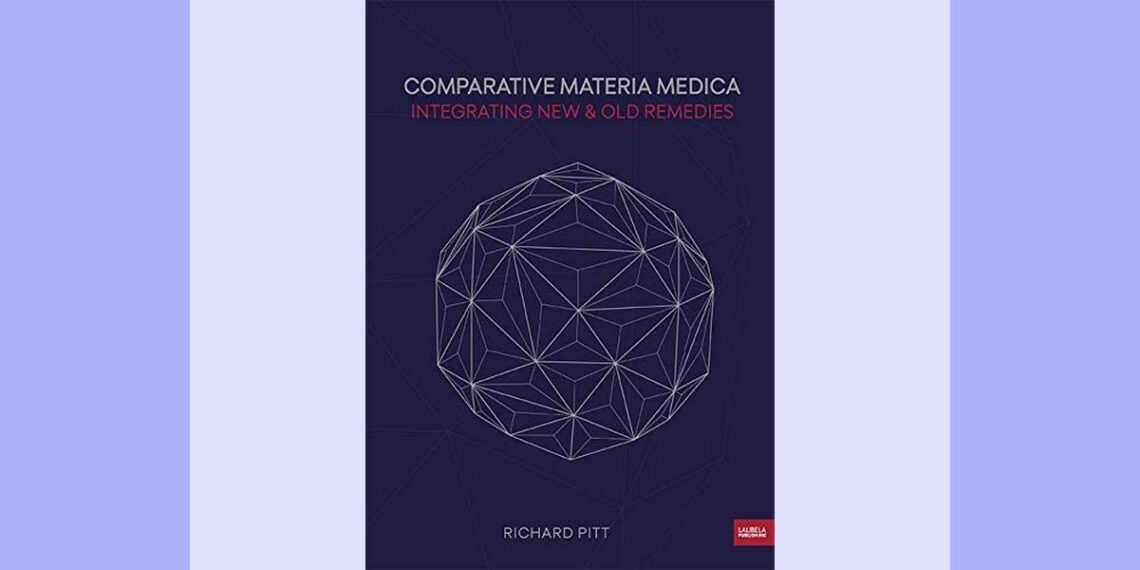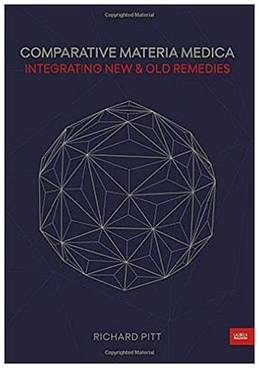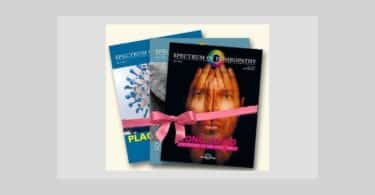Lalibela Pub. 2015
527 pages
ISBN 978-0-976091-81-3
U.S. $ 60
Reviewed by Alan V. Schmukler
When analyzing a case, we usually come to a short list of remedies and from there make further distinctions. More often than not the simillimum does not shout out and the work of fine tuning the list begins. At this point we turn to comparative materia medica, and there are some excellent ones available. Richard Pitt’s book builds on those other works adding more of the mental aspects of remedies and also describing the stages at which the remedy state may exist.
In the introduction the author offers perspective on such topics as constitution, etiology, layers, remedy pictures, the new methods and remedies, and characteristic symptoms. Here you will experience the author’s intellectual rigor and clarity. He finds the central points that have been muddied by popular use and gives them grounding and accuracy.
Thirty six well known remedies, which include four nosodes, make up the headings of the remedy chapters and those are compared to hundreds of other remedies from every kingdom. The book is based on the clinical relationship of all those remedies, and takes the further step of summarizing the different stages of each remedy. The stages are: the intrinsic or constitutional stage, associated with the psoric miasm, the compensated stage where functional and structural changes occur and which relates to the sycotic miasm and the decompensated or syphilitic stage with extreme pathology.
The idea of stages as elaborated by Dr. Prafull Vijayakar (Predictive Homeopathy) has been important in recognizing remedies when they don’t look like the classic remedy picture. Dr. Niva S. Ghosh writes that the usually extrovert Phosphorus, when under the influence of another miasm “will give the impression of an introvert, sullen, indifferent, unfriendly, discouraged and highly depressed individual that may mentally somewhat correspond to a Natrum-mur”. The inclusion in this book of the three stages for each remedy is an important addition and allows one to make assessments of stages or levels.
Each chapter begins with a brief statement of the main theme of the remedy, followed by a list of keynotes, then some characteristics of the three different states of the remedy. After the keynotes and also for each stage of a remedy the author suggests a number of remedies to compare it to. The progression from one stage to the next is then described in a single paragraph. What follows is a more detailed description of the remedy and then various important characteristics, and through all this, remedy comparisons abound. Further along, physical aspects and pathologies of the remedy are discussed, again with remedy comparisons. This book compresses a great deal of information into sections that can be accessed for study rather quickly.
One of the first things I do when evaluating a new materia medica, is to pick a handful of remedies that I know very well, and see how the author handles those. In some books I have found authors describing remedies rather too imaginatively and beyond what the evidence allows. In this case however, I was never disappointed. Richard Pitt’s descriptions I discovered to be entirely accurate in every instance. His depictions are dependable, which is a must.
I was happy to see that Chapter 36 covered the bowel nosodes which are certainly less understood and underused. In that same chapter the author discusses the nosodes of the plague, smallpox, leprosy, AIDS, Whooping Cough, Measles, Mumps, Rubella and Chicken Pox, Diphtheria, Polio, Hep B and influenza, as well as bacterial nosodes.
What could be improved here? Occasionally when the author was comparing very many remedies, I found the distinctions a bit too fine to resolve. This may be the result of including so much in this book. The font is somewhat small, but larger font would have turned this into two volumes, making it more cumbersome to use.
This is a work written by a homeopath with many years in both practice and teaching. It shows his discipline and careful choice of words. Whenever one needs to decide between remedies that are close, this book will prove a valuable addition.







Very good elaborated information about the book sir.
Wow! You have described the book in such a detailed yet a neat manner.